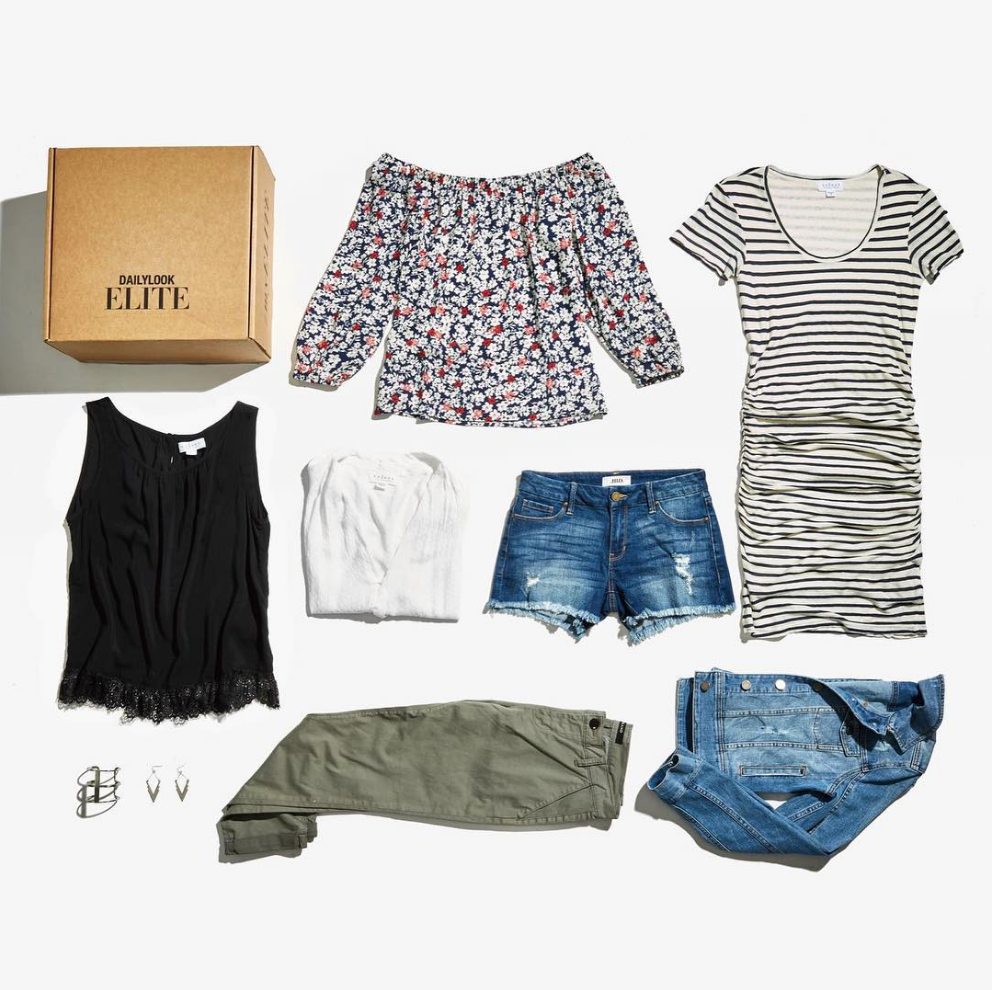DailyLook

About DailyLook
While other fashion retailers were selling clothing items, DailyLook was selling complete outfits. Since the beginning, their goal has been to help women find complete looks. Unlike most other retailers, the DailyLook website featured models wearing a full outfit for shoppers to buy with a click. “It was a differentiator, but not a huge one,” says CTO and Co-Founder Eric Marston. Although it sent them apart, it wasn’t going to catch on for the shoppers seeking a personalized experience.
When they saw what Trunk Club was doing for the fashion ecommerce industry, they immediately wanted to try it for themselves. What they wanted to incorporate was the new Try Before You Buy business model. It’s where shoppers can try now and pay later for their clothing order. “Instead of making it so they can click to buy everything at once, we sent them a box with complete outfits in it,” says Marston. “Then they can try it on, keep what they like, and send back what they don’t.” After about a year of testing, they pivoted their entire business to the Try Before You Buy model.
How DailyLook Works
To get started with DailyLook, women sign up for their service by taking a 40 question quiz. This survey helps inform the stylists at DailyLook her style preferences, what they like to spend, as well as size and measurements. Then, a personal stylist will choose 7-12 clothing items for her as a complete outfit. When the package arrives at the door, she can try on the clothes at home within a certain timeframe.
When we get the return, we’ll see what they kept and what they sent back, and then charge their card for it.
After she’s done with her home try-on session, the shopper then logs onto the DailyLook website or mobile app to check out. She marks what to buy, and what will be sent back. Within the box is a shipping envelope and pre-paid return label. Packing what she doesn’t want, she’ll put the package in a nearby drop-off box to send back to DailyLook.
To Avoid Fraud/Abuse
To help avoid fraud or theft, Marston says they have safeguards in place to deflect some obvious potential abuse to their business model. “We have some advanced fraud systems to stop people from signing up that are going to try and fraud us.” That upfront technology helps deter credit cards that can’t be charged well before a box is ever sent their way.
Keeping free clothes for several days brings obvious concern that some shoppers may abuse this freedom. To keep an honest relationship with their customers, Marston says “we put a big hang tag on everything.” This giant tag on the clothing prevents the shopper from wearing the clothing item without taking the tag off. “We tell our customers if a garment comes back without a tag, we’ll charge a 15-20% restocking fee,” says Marston.
The DailyLook Tech Stack
Try Before You Buy wasn’t (and still isn’t) the easiest business model to implement. For DailyLook, they had to figure most of it out on their own. “We have custom everything,” says Marston. “At this point, no software platform that can do exactly what we need it to.”
“Building those systems is not an insignificant thing,” says Marston. When first implementing the new system, it took beta testing that was all manual. They opened up their entire catalog to select customers to let them test the Try Before You Buy options. Marston says it’s not an easy business to get into. “A big part of it is to figure out a way to beta test it without having to build all the systems right away and see if it’ll work with your market segment”.
The DailyLook Shipping Process
When they first started the box subscription service, DailyLook was using a 3PL for shipping and fulfillment. “We figured out pretty quickly that a 3PL was just not going to cut it for a box subscription service model,” says Marston. “A big part of what we’re selling is the presentation of everything and the high-end touch,” says Marston. So, they brought fulfillment in-house.
We decided to take our fulfillment in-house and needed something to print shipping labels.
They chose ShipStation as their shipping solution and were able to integrate their custom store solution via the API. A big factor in their decision was the ability to access an easy-to-use interface from any computer in the warehouse attached to a weighing scale. Since then, they’ve implemented some great features. “We use automation rules to look at what zone the shipment is going to and then automatically select carrier and service for a particular zone.”
Apart from picking, packing, and great shipping rates, ShipStation plays a vital role in the Try Before You Buy Business model. “We send a pre-printed return label with every order.” Marston says that returns are an expected part of the new business model. “We expect to get returns on 100% of the orders,” says Marston. “We do have some people that keep the whole box, but for the most part, everybody is going to send something back.”
We're using ShipStation for the fulfillment side of things. Picking, packing, shipment labels, and outgoing return labels.











